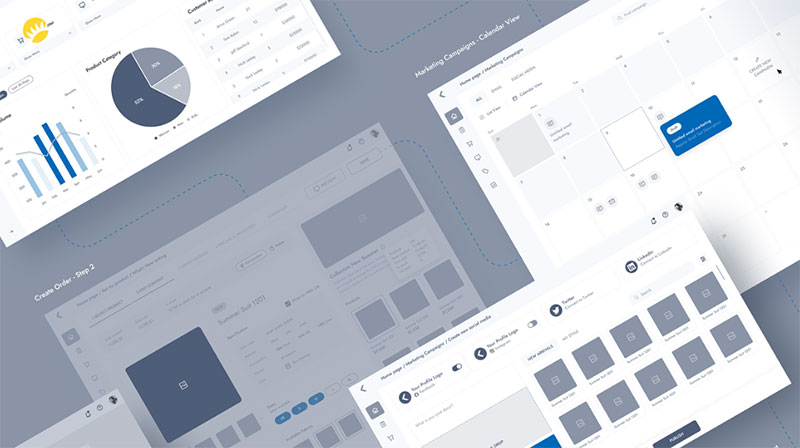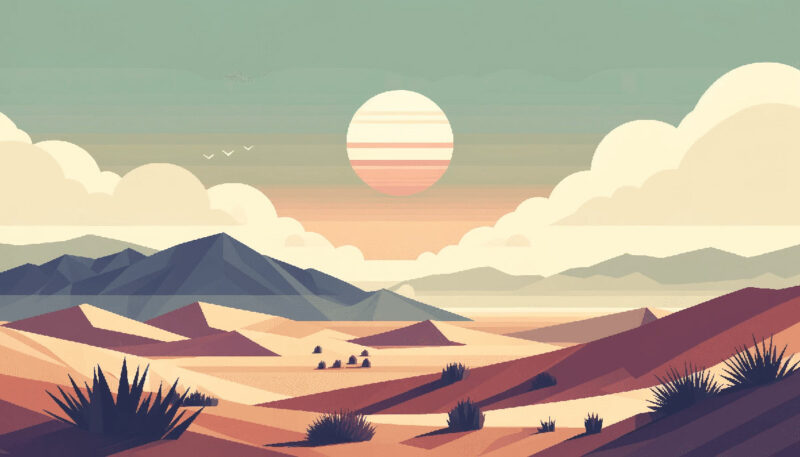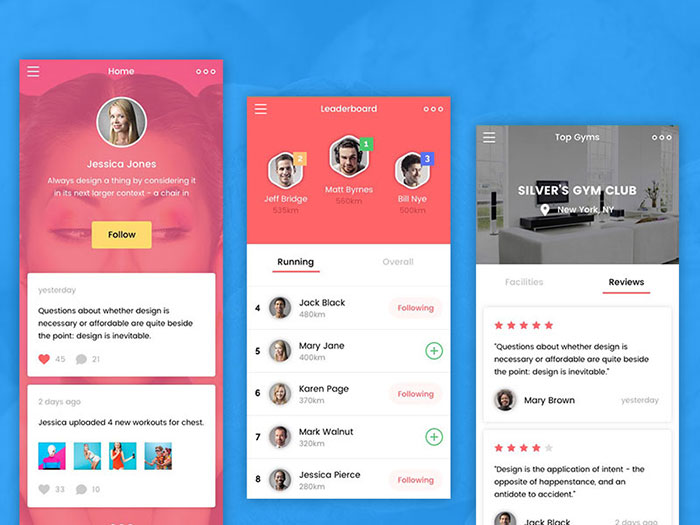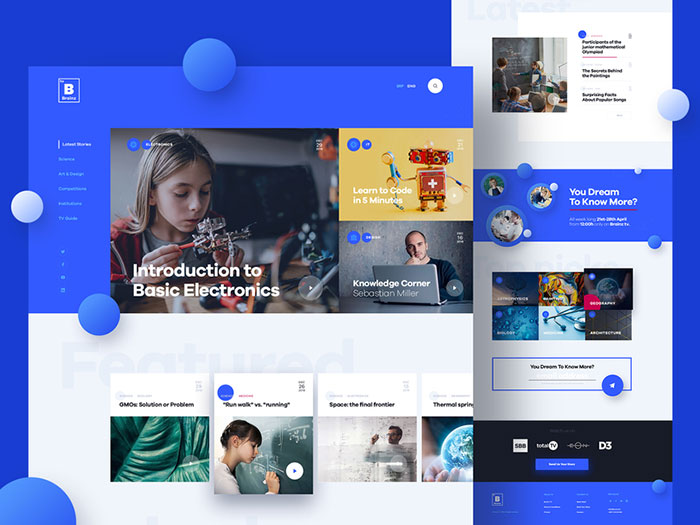Picture this: You tap a sleek app icon, and a world of intuitive navigation coupled with riveting visuals springs to life. That’s the art of UI design – an alchemy of graphics, usability, and user empathy, transforming zeroes and ones into fluid, memorable experiences.
Driven by a surge in digital innovation, the call for UI designers echoes across start-ups and tech giants alike.
Here’s the deal – there’s a path to join this creative vanguard, and it’s lined with more than just pixels and wireframes. Get ready to decode the design thinking process, learn the secrets of visual design, and embrace a whole slew of interaction design techniques.
By the tail end of our digital tour, the steps on how to become a UI designer will morph from elusive to crystal clear.
Dive into our insider’s breakdown: from mastering Figma and Adobe XD to piecing together a stellar UI design portfolio.
This isn’t just about creating; it’s about connecting, iterating, and thriving in a dynamic career where every interface is a new chapter of innovation. Welcome to the journey.
Understanding the Roles: UI Designer vs UX Designer
Alright, let’s meet the superheroes of the digital universe – UI and UX designers.
Definition and Role of a UI Designer

I, as a UI Designer, am like a digital stylist. I make sure that every pixel is in the right place, the colors harmonize, and the typography speaks the brand’s language.
I focus on aesthetics, but also on interactivity. I want to make sure that the users not only like what they see but also enjoy interacting with it.
Definition and Role of a UX Designer

Now, let’s meet my partner in crime, the UX Designer.
They’re more into the user’s head, figuring out how to make the journey from point A to point B smoother and more enjoyable. They empathize with users, understand their needs, and then design a solution. They’re a problem-solver, a bridge builder.
Differences and Similarities between UI and UX Designers
The line between UI and UX can blur sometimes, but here’s the gist. UI Designers focus on how things look, while UX Designers focus on how things work.
But we’re both driven by one common goal: to create a fantastic user experience. We’re like two sides of the same coin, working in harmony, crafting the digital world one design at a time.
Who Should Consider a Career in UI Design?
Does the thought of designing digital experiences excite you? Let’s see if UI Design is your calling.
Key Traits and Skills of Successful UI Designers
So, you want to know how to become a UI designer?
There’s no secret recipe, but there are some key ingredients. You need to have a good eye for design, a knack for understanding people, and the ability to solve problems creatively.
Being detail-oriented helps too. And remember, you need to love learning because the digital world is always evolving.
The Value of Empathy in UI Design
Understanding users isn’t just about knowing what they want or need.
It’s about feeling what they feel.
That’s where empathy comes in. It’s what helps UX designers walk in the users’ shoes and design solutions that truly resonate with them.
The Importance of Creativity and Analytical Thinking
In this field, creativity isn’t just about creating pretty visuals. It’s about thinking out of the box to solve user problems.
And that’s where analytical thinking comes in.
It’s about looking at the big picture, connecting the dots, and finding a solution that works. It’s about being a designer and a detective at the same time.
The Path to Becoming a UI Designer
Alright, let’s dive into the how-to part of how to become a UI designer.
Educational Background and Courses
There’s no straight path to becoming a UI designer.
You could have a background in design, psychology, or even business. It’s all about learning to understand users and creating designs that meet their needs.
And there are plenty of courses, both online and offline, that can help you gain the necessary skills. Bootcamps, workshops, and even online tutorials can be a great starting point.
Here are some that I recommend:
- UI / UX Design Specialization from Calarts
- Create High-Fidelity Designs and Prototypes in Figma – from Google Inc.
- Designing User Interfaces and Experiences (UI/UX) from IBM
Self-Learning vs Formal Education
Should you go for a formal degree or learn by yourself?
Well, both have their merits. Formal education gives you a structured learning path and a degree that can open doors.
But self-learning gives you the freedom to learn at your own pace and from a variety of sources.
The choice depends on what suits your learning style and circumstances best.
If you want to learn, the internet is a huge place to find resources. Here are some courses on UI desi
Importance of a Strong Portfolio
In the world of UI design, your portfolio is your ticket to opportunities.
It’s not just a collection of your work, but a showcase of your design thinking, your problem-solving skills, and your ability to create user-friendly designs.
So, whether it’s a personal project, a mock redesign, or a real-world project, make sure it shines in your portfolio.
The Role of Internships and Real-World Experience
An internship can be a stepping stone into the UI world. It gives you hands-on experience, teaches you to work in a team, and helps you understand the industry better.
Real-world experience, whether it’s freelance projects or a full-time job, adds weight to your portfolio and helps you grow as a designer.
Essential Skills for a UI Designer
Apart from the eye for design and problem-solving skills, there are a few more abilities to add to your ‘how to become a UI designer’ toolkit.
Technical Skills: Understanding of Design Principles, Prototyping, Wireframing

Being a UI designer is like being a bilingual. You need to speak the language of design principles, and you also need to be fluent in prototyping and wireframing.
Understanding color theory, typography, layout, hierarchy, and other design principles is crucial.
Prototyping and wireframing are about bringing your design ideas to life, to test and improve them.
Soft Skills: Communication, Collaboration, Problem-Solving
In the UI world, you don’t design in isolation.
You work with clients, developers, product managers, and other team members. So, you need to communicate your ideas clearly, collaborate effectively, and solve problems gracefully.
Familiarity with Design Tools and Software
Design tools are the brushes and paints of a UI designer. Sketch, Figma – they’re both tools of the trade. The more you practice with them, the more skilled you become.
The Role of User Research in UI Design

If you watched the video, I can tell you that you can get a UX design certificate from Google, and you can connect with 150+ U.S. hiring organizations in Google’s Employer Consortium.
Back to our article, user research is like the compass guiding the UI design journey.
Techniques for Conducting User Research
There are many ways to understand your users better. Interviews, surveys, user testing, observation – these are some of the techniques you can use.
Each technique has its own strengths, and the choice depends on what you want to learn about your users.
How to Use User Research to Inform Design Decisions
The insights from user research are like clues. They tell you what your users need, what frustrates them, and what delights them.
And these clues help you make informed design decisions. They guide your design process and help you create designs that truly resonate with your users.
The UI Design Process

Designing a UI is not a one-time event but a process, a journey.
Understanding the Design Thinking Process
Design thinking is a process that puts the user at the heart of the design process.
It’s about empathizing with users, defining their needs, ideating solutions, prototyping, and testing.
It’s a cycle that keeps the user at the center and drives towards creating user-friendly designs.
Steps in the UI Design Process
The UI design process can vary, but here’s a general flow: research, ideate, design, prototype, test, and iterate.
Each step is important and builds upon the previous one. It’s a journey from understanding the user’s needs to crafting a solution that fits like a glove.
Importance of Iterative Design and User Testing
Iterative design is about refining your design based on feedback and testing.
It’s about taking a step back, looking at your design from the user’s perspective, and making tweaks and changes. User testing is what fuels this process. It helps you validate your designs and make them better.
Career Opportunities and Growth in UI Design
Alright, let’s talk about the possibilities and growth in this field.
Job Roles and Career Paths in UI Design
UI design is not just one role but a galaxy of opportunities.
You can be a UI designer, a UX designer, a user researcher, an interaction designer, or even wear multiple hats as a generalist.
Each role is unique and offers different challenges and rewards.
Understanding the Job Market and Salary Expectations
The digital world is booming, and with it, the demand for UI designers is rising too.
As a UI designer, you can find opportunities in tech companies, design agencies, and even as a freelancer.
As for the pay, it depends on the location, the company, and your experience and skills. But one thing’s for sure, the financial rewards can be as satisfying as the creative ones.
Future Trends in UI Design
The digital universe is always evolving, and so are the trends in UI/UX design.
Think virtual reality, augmented reality, voice UI, microinteractions, and so much more. Staying on top of these trends is part of the adventure of being a UI designer.
FAQ On How To Become A UI Designer
What exactly does a UI designer do?
They’re like the architects of the digital world. A UI designer focuses on crafting the look and feel of an app or website.
Their role includes designing interactive elements, choosing color schemes, and ensuring the visuals are both attractive and functional. It’s all about that perfect blend to enhance user experience.
Is formal education necessary to become a UI designer?
No rule says you must have a degree, but it helps. A formal education in graphic design or human-computer interaction can give you a solid foundation.
However, many designers are self-taught, leveraging online courses and tutorials. What counts is a strong portfolio that showcases your skills and creativity.
Which tools should UI designers master?
Think of tools like Figma, Adobe XD, or Sketch as a painter’s brushes – essential. They’re the go-to for prototyping, wireframing, and bringing your designs to life. Knowing your way around them is non-negotiable in the UI playground.
How important is coding for a UI designer?
Let’s put it this way: it’s a bonus. Coding isn’t typically in a UI designer’s core job description. However, understanding the basics of front-end languages can be a game changer. It helps you communicate with developers and ensures your designs are feasible.
Can you switch from graphic design to UI design?
Absolutely. The leap from graphic to UI design is a common one. The principles of typography, layout, and color theory in graphic design provide a strong footing.
It’s all about repurposing those skills to the digital stage, keeping user interaction at the heart of your designs.
What’s the difference between UI and UX design?
They’re two sides of the same coin. UI is about the surface – look and feel. UX is about the experience – how it works. As a UI designer, you’ll focus more on the visual aspects that users interact with, but having UX knowledge amplifies your design decisions.
How do you build a UI design portfolio?
Start by including any relevant work – even personal projects. Highlight your process from wireframes to finished screens, ideally with case studies that show problem-solving.
Platforms like Dribbble and Behance can showcase your work. Remember, the quality of your work trumps quantity.
Are there specific industries that need UI designers more than others?
Tech-centric fields crave UI designers, but as our world turns digital, all industries – from healthcare to finance – are on the lookout. Any sector with a digital interface needs a UI designer’s touch.
What does the future of UI design look like?
In short – bright and evolving. As technology leaps forward, the demand for intuitive UI is rocketing.
We’re talking about advances in responsive design and interaction design, plus a rise in voice-controlled interfaces. The field is dynamic, so staying curious and adaptable is key.
How do you stay updated in the field of UI design?
It’s a mix of continuous learning and community engagement. Follow design blogs, attend webinars and UI/UX conferences. Engage with the design community on forums or platforms like Twitter. The design world’s heartbeat is innovation, so keep your finger on the pulse.
Conclusion
Wrapping this journey up, we’ve sliced through the digital fabric, unfolding the meticulous map on how to become a UI designer. It’s crystal – punch in passion, sprinkle in relentless learning, and loads of practice.
Let’s lay it down straight:
- Forge a skill set that pivots around design software like an old friend; these are your tools for creation.
- A stellar portfolio? Non-negotiable. It’s your visual voice in a crowd, loud and clear.
- Grasp the essence of user-centric design; empathy’s the name of the game.
- Stay voraciously curious, the kind that keeps the midnight oil burning.
With every pixel placed and interface interaction designed, remember, you’re not just creating; you’re connecting – bridging the user and the digital realm. So, go ahead, saddle up with determination, creativity, and the zest to keep learning—an electrifying foray into UI/UX awaits.
- The Bungie Logo History, Colors, Font, And Meaning - 27 April 2024
- After Dark: Night Color Palettes for Mysterious Designs - 27 April 2024
- The Capcom Logo History, Colors, Font, And Meaning - 26 April 2024









